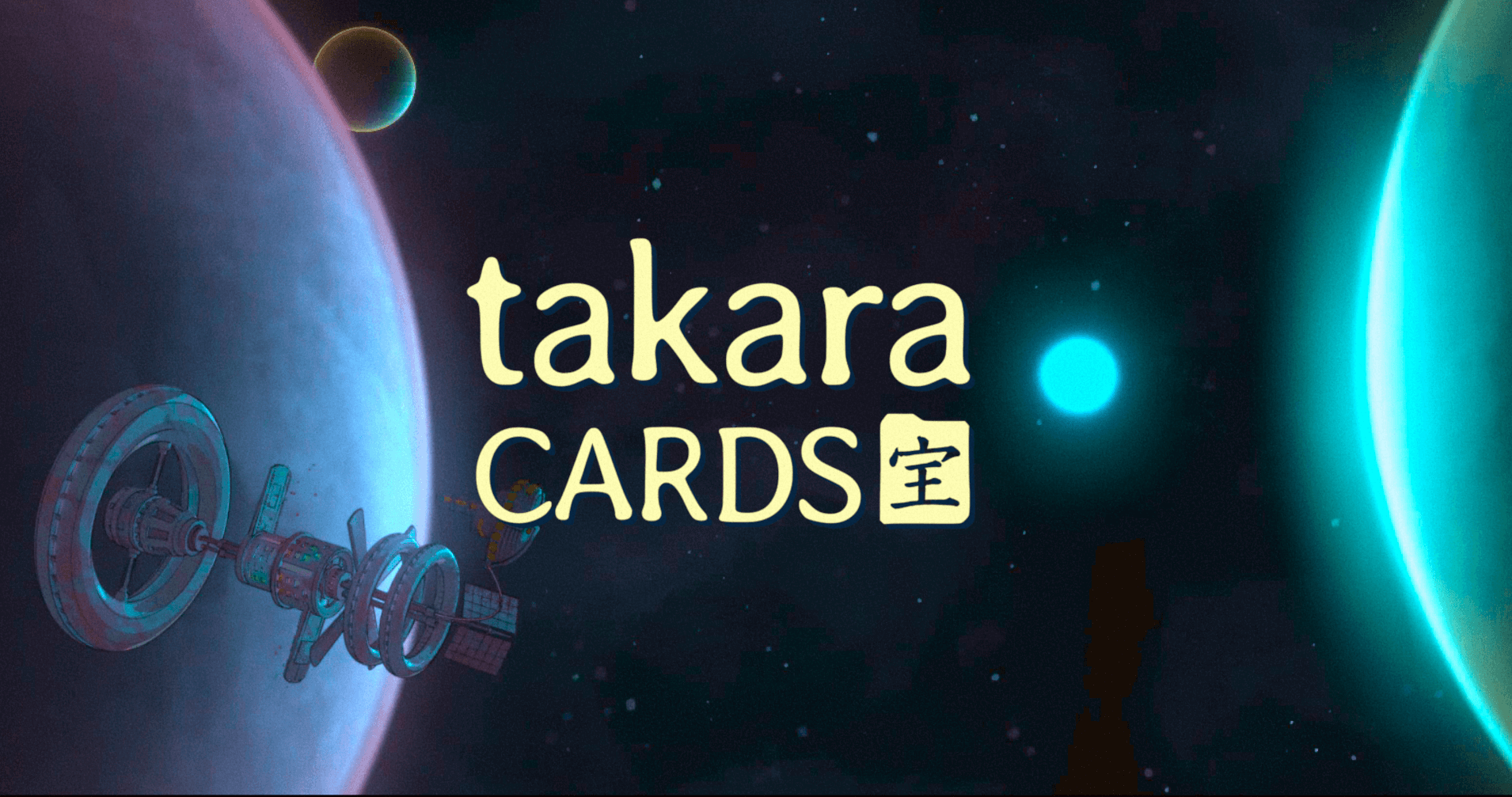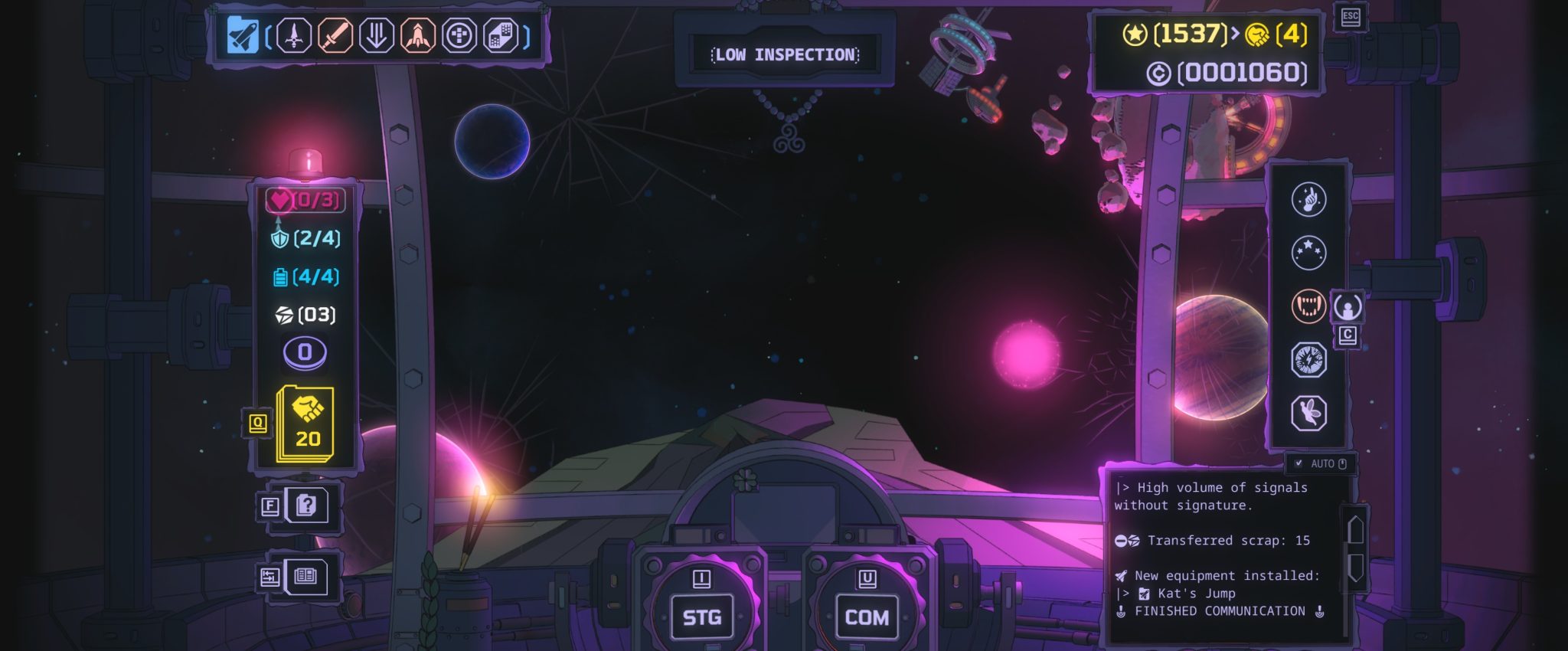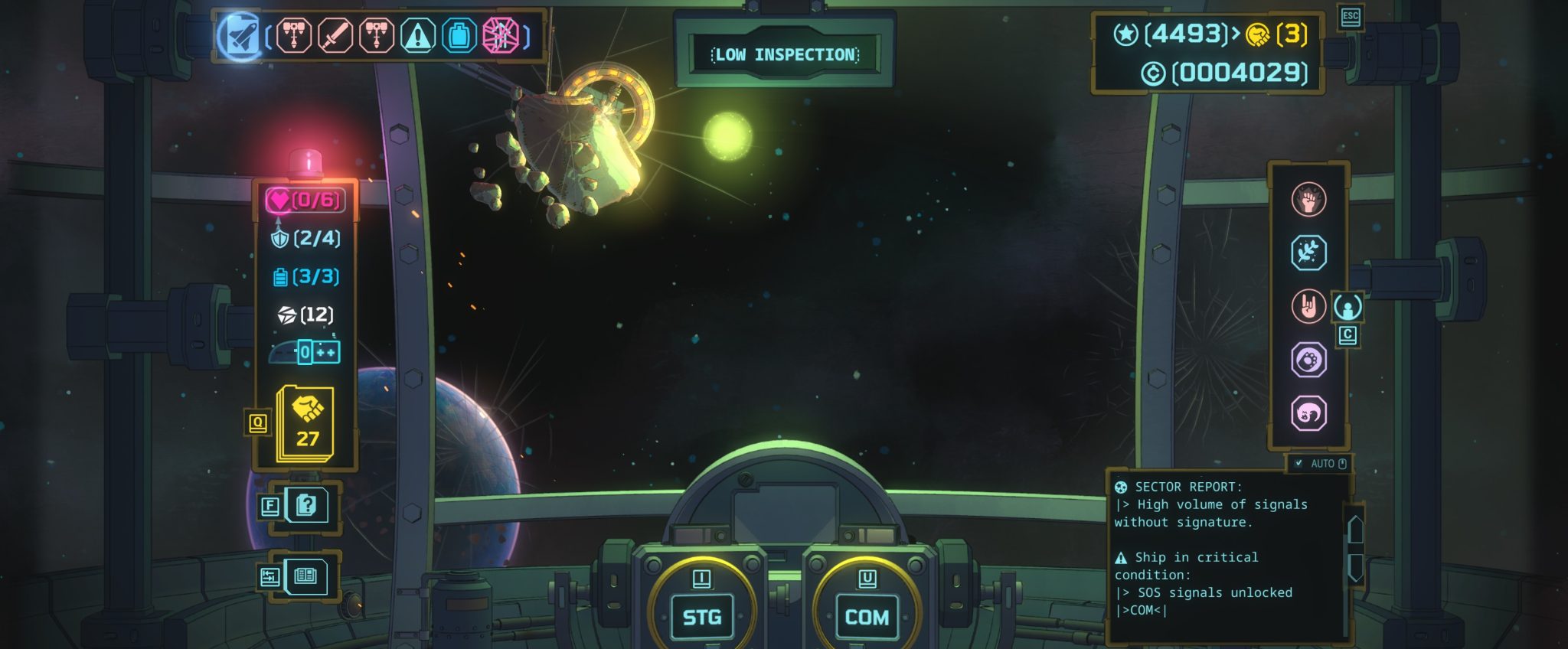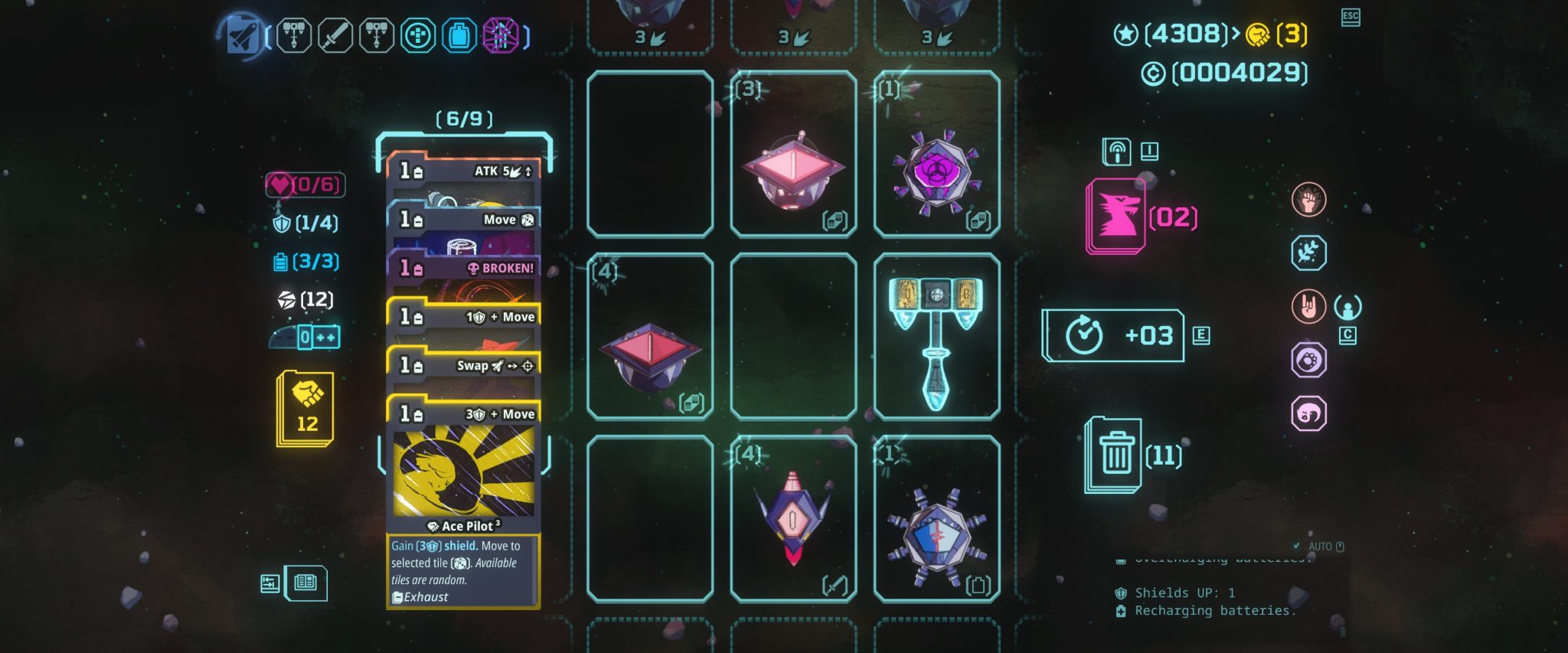
Заходите на борт увлекательную сферу карт Такара, ролевой игры с построением палубы, которая дает вам возможность формировать ваше путешествие. С каждым выбором, который вы делаете, влияйте на ваше судно и характер в этой вселенной карт Такара. Эта игра предлагает отличительную боевую систему на основе сетки в научно-фантастической среде. Давайте вместе отправимся в приключение, обнаружив, где наш корабль может плыть дальше.
Вложился в "перспективную" компанию по совету таксиста? Мы тоже так делали. Заходи, у нас тут клуб анонимных инвесторов, и мы лечимся фундаментальным анализом.
Бесплатный Телеграм каналВ этом обзоре я пойду за следующие темы.
- История
- Гонки
- Кабина
- Карты
- Гильдии
- Карта
- Боевой
- Заключение

История
Как новичку Федерации, вам поручена интригующая миссия: выследить неуловимых Космических драконов, подозреваемых в организации краж на территории Федерации. Однако многие сомневаются в их существовании, поскольку считают, что это всего лишь мифы. Ваша обязанность — совершить космическое путешествие и раскрыть правду, стоящую за этими легендами.
Гонки
В игре Takara Cards вы столкнетесь с четырьмя различными типами персонажей, у каждого из которых свой особый подход к игровому процессу. Это храбрые гномы, проницательные люди, загадочные орки и элегантные эльфы. Каждая из этих групп обладает уникальными способностями, которые отличают их от других в игровом стиле.

- Бесстрашные дварфы летают на корабле в форме молота. Их боевые действия основаны на Импульсе, который может увеличивать или уменьшать количество карт в зависимости от количества импульса, которым они обладают. Уничтожение врагов может увеличить скорость, но использование оставшейся энергии может уменьшить ее. Для этого вам необходимо быть очень тактичным в использовании своих карт, чтобы в конце хода у вас не осталось лишней энергии.
- Люди летают на корабле, который имеет форму ножа. Их бой сосредоточен на Вентуре. Как и «Импульс», «Вентура» влияет на некоторые карты в вашей колоде. Это влияет на все случайные шансы на определенный процент. Вентура разыгрывается повторно каждый ход. Его также можно разыгрывать разными картами. Это позволяет игрокам чувствовать себя менее тактичными и в большей степени полагаться на удачу. Однако удача часто на вашей стороне.
- Корабль орков имеет форму посоха. Они сосредоточены на мане и размещении турелей. Турель стреляет по врагам и подзаряжает батарею корабля, когда вы сталкиваетесь с ней. Мана вырабатывается из тела орка и может быть использована в качестве резервной энергии для питания корабля.
- И, наконец, эльфы. Они летают на корабле в форме баллисты. Эльфы поклоняются очарованию и, как следствие, могут направлять его. Это позволяет им использовать карты всех других рас в игре
Кокпит
Дизайн интерьера каждого корабля одинаков. В левом верхнем углу вы увидите свой текущий инвентарь, включающий оружие и различные безделушки. Количество мест для хранения этих предметов ограничено шестью. Приобретение большего количества снаряжения означает, что придется пожертвовать местом для хранения мусора, о чем мы вскоре поговорим.
Слева вы увидите панель состояния корабля. На этой панели в режиме реального времени отображаются показатели состояния вашего корабля, включая прочность корпуса, защитные экраны, аккумуляторы и уровень утилизации. Корпус отражает общее состояние вашего судна. Если оно упадет до нуля, самое время покинуть корабль и приобрести новый.
На картах Такара щиты сохраняют свою силу на протяжении каждого раунда боя, а также между сражениями. Батарейки служат вашим ресурсом для игры в карты, как и в других играх этого жанра. Металлолом в основном образуется при разборке поверженных вражеских кораблей и может быть продан за кредиты.

In the game interface, you’ll notice a status panel where your deck of maneuvers resides. You can pop by this area to check out your deck and discard any cards that aren’t quite fitting for you. There’s a minimum requirement of 6 cards, but feel free to stack it up as high as you like. When not engaged in combat, you even have the option to draw a random hand, giving you a sneak peek at the cards you might pull during battle. This feature is quite unique and something I don’t often see in other deck-building games.
At the foot of the cockpit, you’ll find the options for the Star Transfer Gate and Communications Panel. The Star Transfer Gate serves as a window to the stars, allowing you to check the map and navigate to your next destination. The Communications Panel facilitates interaction with various guilds in your current region.
On the upper right corner of the cockpit, you’ll find your Experience Points, Level, and Credits. Your Experience Points serve dual purposes — you can employ them to acquire fresh maneuvers for your deck, or use them to progress your character to higher levels. As your character advances in level, your maneuver cards will also enhance. Since Experience Points are utilized for acquiring new maneuvers, your Credits are intended for purchasing new gear or repairing your vessel.

Underneath this point, you’ll discover your character traits, elements that shape your personality. You acquire both positive and negative traits based on your decisions at different stages throughout your adventure. Your character’s reputation impacts their Karma, which guides your journey. Karma in Takara Cards determines the types of encounters or events you may experience. There are seven distinct forms of karma: Bless, Curse, Courage, Kindness, Reason, Intuition, and Wealth. Additionally, Karma influences your attributes, which can impact both events and combat, implying that your choices truly shape your adventure.
Cards
In a game that involves creating your own deck, let’s delve a bit deeper into the cards. The cards you pull during combat can originate from two distinct areas: your equipment and your maneuvers deck. The proportion of equipment cards to maneuver cards in your draw will depend on the quantity of equipment you possess, but you’ll always receive cards from both sources. This implies that you’ll likely use your equipment cards more frequently than your maneuver cards, as the equipment pool is typically smaller, with 6 or fewer cards.
Every card you play has a cost associated with it, though not all require energy. For instance, «Scrap Missile» requires scrap rather than energy to be played. Some cards even have zero energy costs. Primarily, these cards are used for attacking, moving your character, or acquiring shields. The majority of cards perform more than one function. For example, «Raise ’em High» moves your ship and may grant 1-3 shields. Certain cards will be exclusive to your race and will interact with your racial abilities, like Impetus for dwarves and Ventura for Humans. Discovering the optimal mix of cards between your gear and maneuvers is crucial for a successful journey.

Guilds
At most places you go, you’ll find guilds advertising their offerings. By accessing your Communications Interface, you can see what services are available at that particular spot. Among the guilds offering services are the Mana Guild, the Merchant’s Guild, and the Pathfinders Guild. These guilds provide a range of services like tactical training, equipment sales, scrap purchasing, and ship repairs.
Takara Cards offers some distinctive features that come in handy, like the card search function. This feature lets you spend credits to boost the chances of finding specific cards at future stores or events. Additionally, they have the Giant’s Savings Bank. Not only does it purchase your junk for credit, but it also enables you to accrue debt with them. This way, you can repair your ship and travel to the next destination, even if you don’t have enough money to cover both expenses. You can simply top up your account and settle your debt with the Giant’s Savings Bank at a later time.

Map
In contrast to many other deck-building games, the layout of the Takara Cards map is more flexible. Unlike the usual spider web design, you’re free to travel in any direction within your vicinity, regardless of whether you’ve visited that star before or not. Being aware of where each guild is located can be quite beneficial if you’re searching for specific items.
Instead of crossing your fingers and praying that the next star system has repair facilities for your spaceship, you have the option to return to a previous star system where you know repairs can be made. Just remember, each jump does require some monetary resources. While it’s true that you can visit any location multiple times, that doesn’t necessarily mean it’s the wisest decision every time.
Before transitioning to a new map, there are multiple destinations to check out first. You’ll have an idea of the enemy numbers and local guilds at each location before deciding to travel. Once you’ve explored the desired areas, you can proceed to the Draconian Signal for the boss battle. If successful in defeating the dragon, you’ll then progress to the next map for further exploration.

Combat
Concerning the dragon battle, let’s delve into how the combat system in Takara Cards operates. The system involves multiple aspects at play. Combat takes place on a 3×3 matrix. Above the grid, there is an extra row to forecast incoming adversaries, while below it shows enemies as they exit the grid.
During the adversary’s turn, they act from left to right, row by row. On their turn, enemies can either move or attack. If an enemy moves into a space occupied by another enemy unit, they combine to increase in strength. The enemy’s power is a combination of their health and attack capabilities. It’s best to eliminate them before they start merging and growing stronger. Attacks from enemies that strike other enemies will also merge, enhancing the attacking unit’s strength.

In this game, you’ll navigate the grid with your playing cards and engage enemy units. This card system is similar to many games within the genre. Each of your cards demands energy or another resource to be activated. By utilizing all your cards consecutively, you’ll receive a fresh set of cards. Defeating enemies grants you either energy or scrap resources. If you manage to eliminate most of the enemies in a single turn, additional enemies will populate the empty spots on the grid.
In this space adventure, your mission is to endure the jump successfully. The jump terminates either when you vanquish all adversaries or your spaceship meets its demise. It’s crucial to remember that your spaceship doubles as a weapon. Unlike other games, your ship doesn’t blow up instantly when your health reaches zero; instead, employ your shields and hull wisely to decimate the enemy units more efficiently. The quicker you conquer the jump, the better your combat rank will be, granting you increased experience points. Additionally, you can boost your rank by using all of your cards in a single turn and by defeating a substantial number of enemies on the grid simultaneously.

In each area, you’ll encounter a boss fight that must be won to progress. Each of these fights consists of two phases: a duel against a dragon. For the initial phase, you need to damage one of the vents to gain access to its ship. To complete the second phase, you can either slay the dragon or destroy its vessel. However, it’s essential to note that the dragon cannot be targeted directly by your cards. The choice is yours on how to end the fight – either by killing the dragon or destroying its ship – and then you’ll move onto the next zone.
Conclusion
Let’s decide if Takara Cards is worth buying. Firstly, it offers multiple engaging aspects. For instance, there’s a strategic, puzzling combat system that plays out on a turn-basis. Additionally, the deck includes over 140 distinct cards, each with its own karma-based reputation system. What makes Takara Cards stand out is its unique health system, which features an ejection mechanism, enabling you to carry on even when you find yourself in a tricky situation.

Here are a few areas that could benefit from some improvements. The game doesn’t present much of a challenge, even when played at its highest difficulty level. During my trials with various races, I found myself needing to start a new game for each race since I never managed to die. This might be due in part to the previously mentioned ejection system, which makes it almost necessary to intentionally die to conclude a run.
In addition, it’s worth mentioning that the boss fights within each zone are repetitive, as they follow the same pattern every time. If you manage to crack the code on how to defeat the dragon, essentially, you just need to wash, rinse, and repeat. I hope a future update introduces more diversity in these battles, but for now, it’s not a major concern, as they don’t break the game by any stretch of the imagination.
All things considered, I find Takara Cards quite enjoyable as a light and distinctive card-building game. If you’re seeking a more laid-back experience with an ’80s vibe and amusing narration, then Takara Cards is the perfect fit. However, if you prefer something more demanding with intense battles, you might want to hold off on this one or wait for an update that addresses the points I’ve mentioned. The game is available now, so head over to their Steam page if you fancy a play.
Смотрите также
- Серебро прогноз
- Золото прогноз
- ГК Самолет акции прогноз. Цена SMLT
- ЭсЭфАй акции прогноз. Цена SFIN
- ПИК акции прогноз. Цена PIKK
- ОВК акции прогноз. Цена UWGN
- ЛУКОЙЛ акции прогноз. Цена LKOH
- Прогноз нефти
- Газпром акции прогноз. Цена GAZP
- Whoosh акции прогноз. Цена WUSH
2025-02-20 15:59